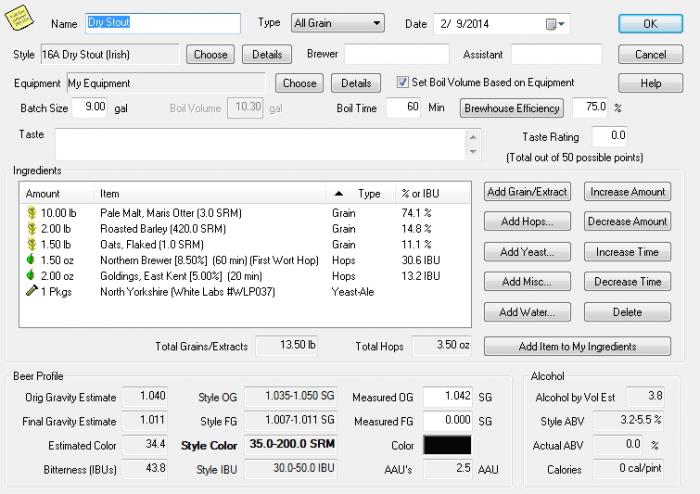Honestly it's any typical 5 gallon recipe. Nothing really special in the grain bill. It's all in playing with the numbers in BS.
I can try to explain it off the top of my head, but forgive me if I miss a few details. Though it's not difficult.
1) Basically you create a 5 gallon recipe in beersmith.
2) Make note of the og and ibus.
3) Figure out what 18% more of your ibus are, then using the ibu's tab in beersmith let the software recalculate the hopping amount to account for it, or do it yourself.
4) Change the Batch Size to whatever you want to be able to boil on your stove. If it's 4 make it 4- I tend to do 2.5 with a 3.5 pre-boil volume-make sure you adjust BS to the pre-boil volume to reflect your boil off rate.
5) After you change your batch size your og is now going to be quite a bit higher than it was when it was a 5 gallon. Obviously- a thicker wort is going to have a higher gravity. Make a note of this higher gravity.
6) Click on the dillution ratio calculator in your software, beersmith's looks like this-
7) Enter the starting Wort volume (which is your final volume from step 4 above, mine would be 2.5).
8) Enter the specific gravity of the thicker wort.
9) Click on the "dilute with" drop down and select water.
10) Enter the top off amount of water you need to get to your 5 gallons (Volume to add) and you should see that "magically" the calculated "final specific gravity" will be what it would have been if you had done a normal 5 gallon final volume boil. In other words it should match the Og you made note of in step 2.
Now what I do on brew day to take it out of the theory of recipe creation and into the practice of what really happens on brew day is that I mash and sparge into a bucket with graduated measurements so I know exactly what my preboil volume is. Then I take a refractometer reading to see what my real preboil gravity is, then I re run steps 6-10 to see what the real numbers will be.
Or I do it after I cool my wort and before I top it off with water- I just rack my cooled concentrated wort into my bucket or marked carboy to see how much I have post boil, then run steps 6-10.
Then I top off with water, aerate the wort and pitch yeast as normal.
Hope this helps. I think I remembered all the steps.
Now obviously you CAN just wing it. Just take your recipe only mash and sparge enough to get your small batch preboil volume, boil your wort and top off. Whether you actually run the numbers or not really is irrevelant the gravity of the wort is going to be exactly higher by exactly what the missing amount of water would lower to when you dillute it by the right amount. If that makes any sense to you.

































![Craft A Brew - Safale S-04 Dry Yeast - Fermentis - English Ale Dry Yeast - For English and American Ales and Hard Apple Ciders - Ingredients for Home Brewing - Beer Making Supplies - [1 Pack]](https://m.media-amazon.com/images/I/41fVGNh6JfL._SL500_.jpg)




























